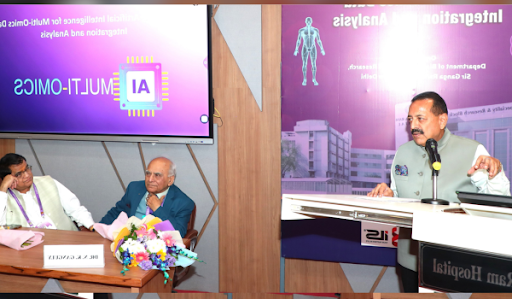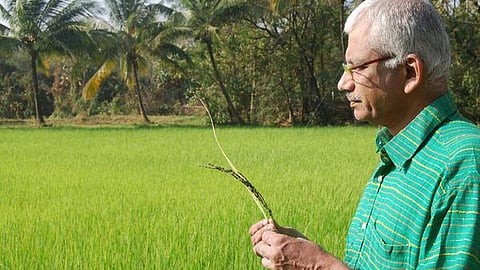



India launched Nafithromycin, its first indigenous Macrolide antibiotic, developed by Wockhardt with BIRAC support. Marketed as ‘Miqnaf,’ it treats drug-resistant pneumonia with a three-day course and tenfold efficacy, marking the first global breakthrough in its class in over 30 years.

Copyright infringement not intended
Picture Courtesy: NEWSONAIR
Union Science and Technology Minister informed that India has developed its first indigenously discovered antibiotic, Nafithromycin.
Miqnaf is the trade name for Nafithromycin, a next-generation antibiotic; completely conceptualized, developed, and clinically validated within India.
Primary Use: Designed to treat Community-Acquired Bacterial Pneumonia (CABP), a common respiratory infection. Effective against a wide range of pathogens.
Global Significance: No new antibiotic in its class (macrolides) has been successfully developed anywhere in the world for over three decades.
Vulnerable Populations: Useful for high-risk patients, such as those with cancer or poorly controlled diabetes, who are more susceptible to severe respiratory infections.
Development: Supported by the Biotechnology Industry Research Assistance Council (BIRAC).
Nafithromycin was developed to combat Antimicrobial Resistance (AMR).
AMR occurs when pathogens (bacteria, viruses, fungi, and parasites) evolve and no longer respond to the medicines designed to kill them.
This is a natural process, but it is accelerated by the overuse and misuse of antimicrobial drugs in humans, animals, and agriculture.
Consequences: As a result of drug resistance, common infections become difficult or impossible to treat. This increases the risk of:
A Global Threat: The World Health Organization (WHO) has declared AMR as one of the top 10 global public health threats, and it is referred to as a "silent pandemic."
Boost to 'Make in India' and Self-Reliance (Atmanirbhar Bharat)
India has developed its first new antibiotic molecule from scratch, highlighting its growing capability in high-end pharmaceutical R&D, beyond its strength in generic drug manufacturing.
A New Weapon Against AMR
Nafithromycin offers a vital new tool for doctors to effectively treat resistant respiratory infections in a country burdened by infectious diseases and increasing drug resistance.
Addresses a Critical Healthcare Gap
Community-acquired pneumonia is a leading cause of hospitalization and death. An effective, locally developed antibiotic can improve treatment outcomes and reduce the healthcare burden.
Global Scientific Recognition
By developing a novel antibiotic that is the first in its class in over 30 years, India has positioned itself as a leader in the global fight against AMR.
Economic Potential
An indigenously developed drug holds export potential, reinforcing India's position as the "pharmacy of the world" and stimulating the national economy.
Source: NEWSONAIR
|
PRACTICE QUESTION Q. The term ‘Nafithromycin’, frequently seen in the news, is related to: A) A newly developed mRNA vaccine for tropical diseases. B) A next-generation antibiotic effective against drug-resistant bacteria. C) A genetically modified crop variety resistant to pests. D) A new class of drugs for treating neurodegenerative disorders. Answer: B Explanation: Nafithromycin, India's first indigenously developed macrolide antibiotic, is designed to combat antimicrobial resistance (AMR). It is effective against drug-resistant pathogens responsible for infections such as Community-Acquired Bacterial Pneumonia (CABP). |
Nafithromycin is India's first indigenously developed, next-generation antibiotic designed to combat drug-resistant respiratory tract infections.
AMR occurs when bacteria, viruses, fungi, and parasites change over time and no longer respond to medicines, making infections harder to treat.
Superbugs is a common term for strains of bacteria that are resistant to multiple types of antibiotics, making them extremely difficult to kill.









© 2025 iasgyan. All right reserved